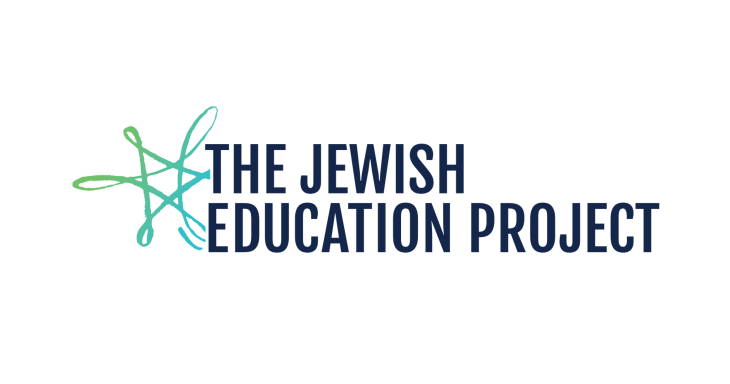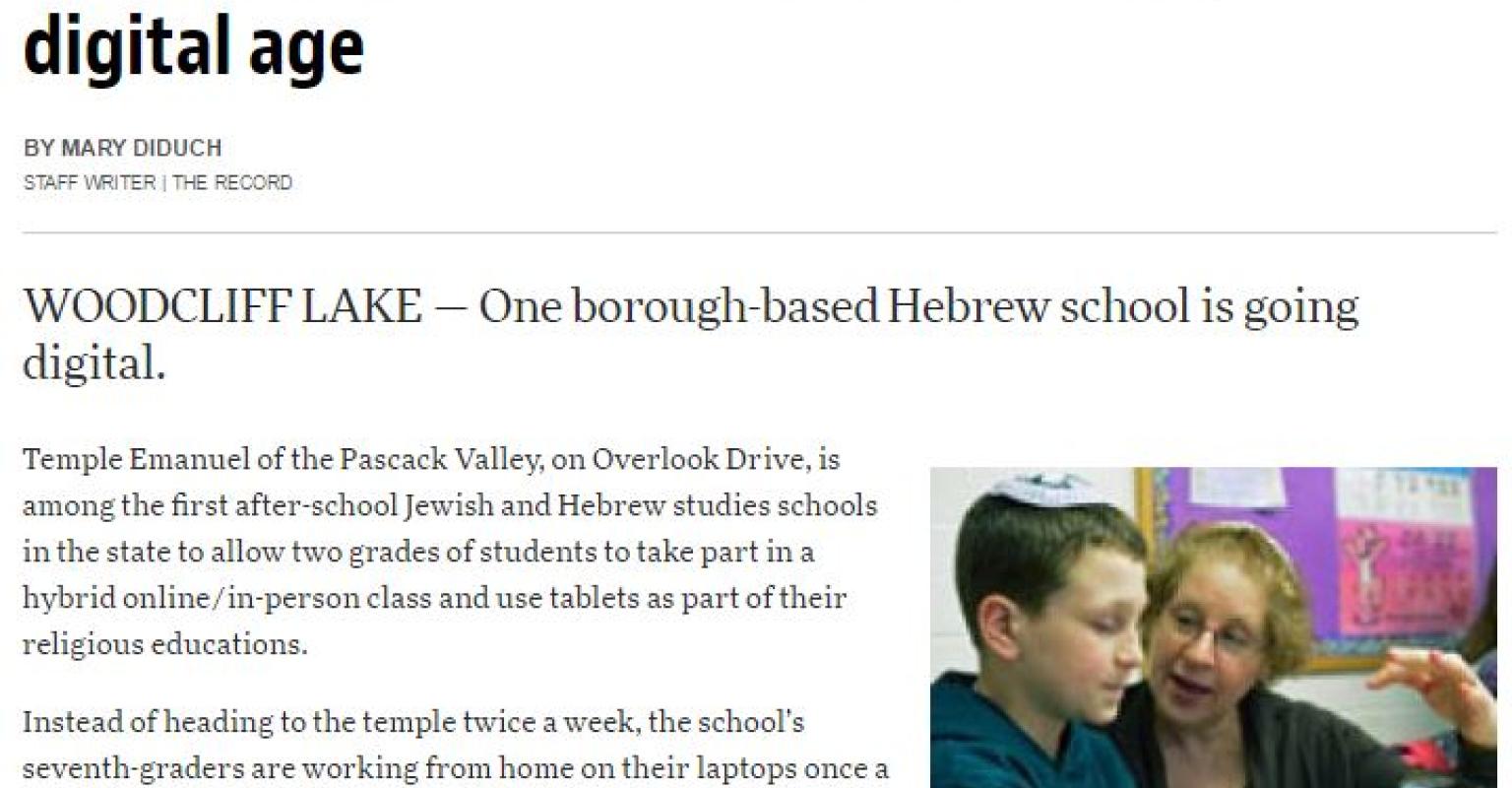Family Learning Model: B'Yachad
Temple Adat Elohim, Thousand Oaks, CA
Model Summary:
B’Yachad is an opt-in learning model that inspires families to live intentional Jewish lives by giving them the tools to do so through text study and experiential learning. Families come together twice a month, once to experience Shabbat as a B’Yachad community and another time to help heal the world by participating in Tikkun Olam (repairing the world) projects both through the lens of Torah, Middot (values) and Life Cycle. Learners in grades 4-6 also meet weekly to learn Hebrew.
Who are the Learners?
Children in 4th-6th grade and their parents, approx. 40 families
Who are the Educators/Learning Facilitators?
-
Parents teach children and children teach parents.
-
Professional teachers facilitate learning.
-
Educator teaches and leads learning regularly.
- Rabbi and cantor are also available to support learning.
When Does the Learning Happen?
-
Twice a month on the first and third weekends (plus Hebrew instruction one day a week)
-
The first weekend families participate in a Shabbat experience – Friday night or Saturday morning.
-
The third-weekend families participate in a Tikkun Olam project.
-
Families attend a retreat together in the fall from Friday evening to Sunday afternoon. In addition, children attend one-grade level retreat during the year.
- Families also celebrate holidays together.
Where Does the Learning Happen?
-
Shabbat learning and Hebrew instruction take place at the synagogue.
-
Both family and grade level retreats take place at camps in the area.
- Tikkun Olam learning and action involve off-site locations that vary according to the project each month.
What is the Learning? How is it designed?
-
Each learning session includes an opportunity for families to connect to one another, to learn together, and to reflect on their learning.
-
Text study is a core component.
-
The content follows the themes of the traditional religious school program in grades 4-6 – Torah, Middot (values), Life Cycle – with lessons intended to engage both parents and children.
-
Learning is designed to be accessible so that families can begin to imagine “doing Jewish” on their own as well as at the synagogue.
- Core to the learning in B’Yachad is providing opportunities for families to learn together rather than separately as adults and children. Learning modalities vary from month to month but typically involve an experiential component.
What Were You Trying to Achieve with this Model?
-
To create opportunities for families to experience key elements of the congregation’s educational vision – Shabbat and Tikkun Olam (repairing the world).
-
To inspire families to live an intentional Jewish life and to provide them with the tools to do so.
-
To enable families to connect to the congregation in multiple contexts and to identify meaningful ways to become more involved.
-
In creating the educational vision, it became clear that the friends people made, the activities they did together, and the places they went to helped ground and preserve their Judaism. B’Yachad (together) incorporates all of these elements by design.
Key First Steps and Recruitment Plan:
-
First Steps committee created a brochure that included a description of the new model and a calendar with all dates for the coming year.
-
Holding several open forums enabled the educator to speak with interested families about what they could expect and to answer their questions. In the second year, B’Yachad parents attended and shared their experiences with 3rd grade families considering the model.
-
Ongoing communication with the congregation about the model through a variety of media keeps all members informed.
- Hiring an appropriate facilitator for the model in order to maintain existing educational offerings in addition to the new model.
Role of governance and Clergy:
-
The First Steps Committee worked to implement the model in its first year.
-
Once the model was up and running a new group formed to provide feedback meeting four times a year.
-
Currently, feedback comes directly from families participating in the model.
-
Rabbi and cantor are also available to support learning.
- The educator developed an open channel of communication for parents to provide feedback, insights, and suggestions as the model evolves. Families also complete surveys to capture their experience in data.
Budget:
-
Initial resources included a two-year Legacy Heritage grant as well as money from the Los Angeles Bureau of Education.
-
The congregation now funds the B’Yachad Facilitator.
- The infusion of additional funds in the first two years of B’Yachad meant that everything was possible. That will now begin to shift. However, the Board of Trustees approved a budget that included the Facilitator position.
Relationship of Model to Congregational Learning System:
-
Family programs often coincide with congregational worship so that the community can be together.
-
B’Yachad children study Hebrew on Wednesdays so that the 6th graders can learn trope together with their traditional religious school model peers. They also worship together on Wednesdays.
-
B’Yachad children participate together with their peers during Shabbat services led by specific grades.
-
During holiday celebrations, B’Yachad families study together first and then join the rest of the community for the actual celebration.
-
The congregation seeks opportunities for B’Yachad children and their families to create connections to the rest of the community, especially the other children. This enables them to transition smoothly to 7th-grade learning which does not have a family learning component. It also allows families to feel comfortable joining in congregational life beyond their B’Yachad cohort experiences.
How Do You Describe Your Congregation?
Temple Adat Elohim is a Reform congregation with about 650 family units. A senior rabbi, an associate rabbi, and a cantor serve the congregation.
- Models-In-Action
- Intergenerational Learning
- Shabbat
- Tzedakah
- After School and Beyond
- Educator Training
- Congregational Learning
- Family Engagement
Discover more

Family Learning Models focus on families both learning and growing Jewishly through shared experiences and study.

Temple Emanuel of the Pascack Valley (TEPV), Woodcliff Lake, NJ. This online, opt-in, home-based learning model for 7th-9th graders is a partnership with JETS Israel (Jerusalem EdTech Solutions).

Congregation Tifereth Israel (CTI), Glen Cove, NY. CTI learners and their families participate in hands-on experiential learning. The curriculum focuses on Jewish values learned through our stories (both modern and ancient).
